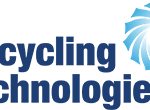By Lesley Eaton, Business Development and Marketing Manager, SEEPEX UK
The recent Water 2020 report published by the regulator Ofwat encourages sludge trading markets between operators in order to move sludge from a company where it is expensive to treat, to one that is cheaper. Ofwat modelling suggests that if its proposed changes are implemented, around 30 per cent of all sludge could move between different water companies.
Wherever it ends up, this sludge will need to be processed. The proposed changes will make it increasingly necessary to transport dewatered sludge over long distances, for example to a thermal processing energy plant. However, a long pipeline does not have to be a barrier to efficient sludge transfer. The SEEPEX Smart Air Injection (patent pending) combines the advantages of two conveying technologies to transport dewatered sludge with high dry solids content over long distances in an energy-efficient manner. Dewatered sludge (or other highly viscous media) is introduced into the pipeline using a progressive cavity pump, forming compacted material which is split into ‘plugs’ and pushed down pipelines of up to 1,000 metres using compressed air.
The future of sludge transfer
This alternative to conventional means of handling dewatered sludge has already been installed at a number of plants throughout Europe, and has generated a rapid return on investment. It is an interesting option for the UK’s sludge treatment centres, as not only can the SAI transfer dewatered sludge over distances of up to a 1,000 metres, it is also economical because the total investment and running costs are comparatively low. SAI is being integrated into one of the UK’s largest water companies later this year, as an energy-efficient, high-performance alternative to conventional sludge handling systems. The customised pumping solution is being engineered to fulfill the plant’s specific requirements and to be configured at the location for optimum energy consumption.
Out with the old
Until now, long distance transfer of dewatered sludge has been carried out by belt and screw conveyors and bucket elevators, which require a lot of maintenance, often made costly by the need for working at heights if silos are filled. In addition, these systems are frequently open to the environment, which can result in unpleasant odours and rehydration by rainwater, and complications on vertical or inclined transportation. As an alternative, closed piping can be used in conjunction with multi-stage progressive cavity (PC) pumps and piston pumps, which are suitable for highly viscous media and high pressures. However, because of the high discharge pressures, these require comparatively high investment costs for higher pressure-rated pipework and valves (in some cases more than 100 bar). Piston pumps in particular also require significant maintenance (incurring downtime), may suffer from hydraulic oil leaks and have relatively high drive power and energy consumption. This was proven at Thames Water where piston pumps were replaced by SEEPEX PC pumps, lowering the discharge pressures and reducing energy consumption by over 50 per cent.
Plant-specific solution
Unlike traditional methods, the SEEPEX Smart Air Injection uses a combination of progressive cavity pump technology and dense-phase pneumatic conveying. A solid ‘plug’ of dewatered sludge is formed by an open hopper pump with auger feed screw, which is then transported onwards by means of pulsed compressed air injection that is pressure-controlled via an algorithm optimised for the application. The pneumatically-transported sludge plug is lubricated with boundary layer liquid, for example dilute polymer solution. This reduces friction in the pipework and improves the energy efficiency of the system as a whole.
The combination of pump and dense-phase pneumatic conveying permanently reduces the pressure in the entire pipeline to below 10 bar which is generated by the pump to set the sludge plug in motion. Once the static friction force has been overcome, the sludge plug is moved by pulsed controlled compressed air, which again reduces the discharge pressure in the pipework. Adjusting system parameters, such as polymer and air volumes, at the location makes it possible to set a plant-specific, energy-optimised operating point.
Smart systems
The reduction in friction losses and the discharge pressure requirements mean that pumps fitted with Smart Conveying Technology (SCT) can be used for long distance, high viscosity transfer duties. Pump maintenance time is minimal (rotor stator replacement in less than an hour), as pipework removal is not required for maintenance. The lower discharge pressure additionally ensures an increased service life for the components, which is further extended by SCT whereby the stator can be adjusted to maintain pumping performance as performance drops. Additionally, in the automated SAI system, process monitoring can be integrated into existing automation and control systems via conventional interfaces. All functional components, sensors and actuators are part of the scope of supply, and are integrated into the control software SAI, which is optimised for the respective application.







